This post is the next in our series analysing how the VoC Life Cycle Analysis for Insurance Providers. It enables businesses to leverage the entire customer journey in order to provide the best customer experience possible by identifying improvements that can be made to drive direct business benefits and customer satisfaction in the same stroke.
We’ll apply the Life Cycle framework to Direct Line Insurance’s public review feedback and explore the interconnected nature of customer relationships.
For more detail on the Insurance Customer Life Cycle, you may wish to read the Hastings Direct Case Study.
Key Findings
- Determining the relationships between customer issues that occur at different stages of the customer journey will help to efficiently and effectively implement operational changes and drive proactive solutions.
- A reporting framework that is designed to target each stakeholders business priorities is key to driving improvements and allocating accountability
- Without using time-series graphs to determine feedback response changes in multiple categories it can be dangerously easy to miss critical relationships, which means that any solutions offered will only cover part of the problem.
Take a holistic approach to each customer touch point to drive improvements
Although a customer can purchase both a pair of shoes and a car insurance policy online, the customer journey associated with these two things couldn’t be more different. Insurance providers are presented with a unique challenge in having to understand the complex journey that a customer goes through as they initially purchase a policy - as well as the renewal, claim and multi-policy requirements.
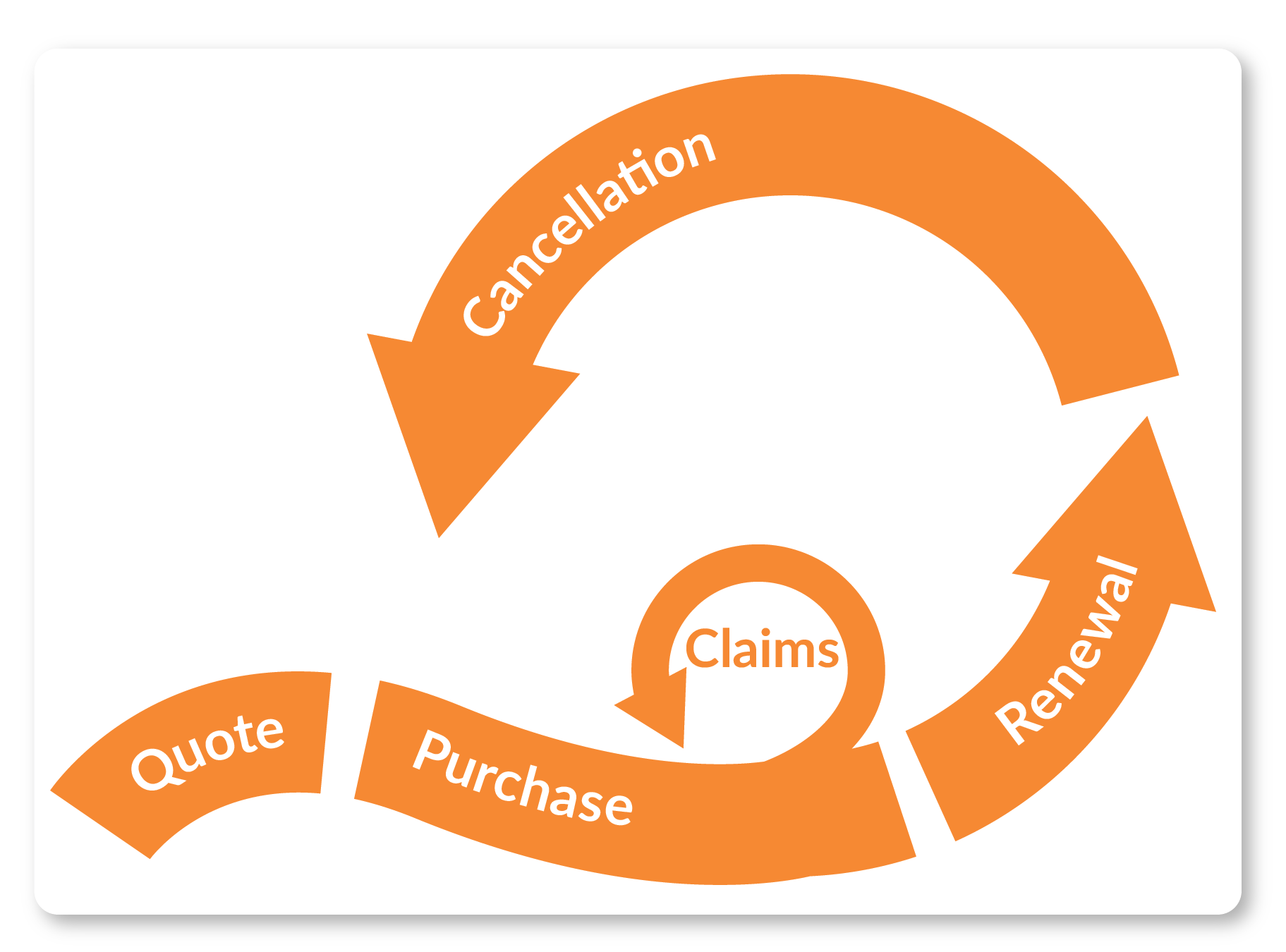
Touchpoint Group’s Insurance Customer Life Cycle Analysis is built with this challenge in mind; allowing a funnel-like granular detailed analysis across all the points that matter most to your customers.
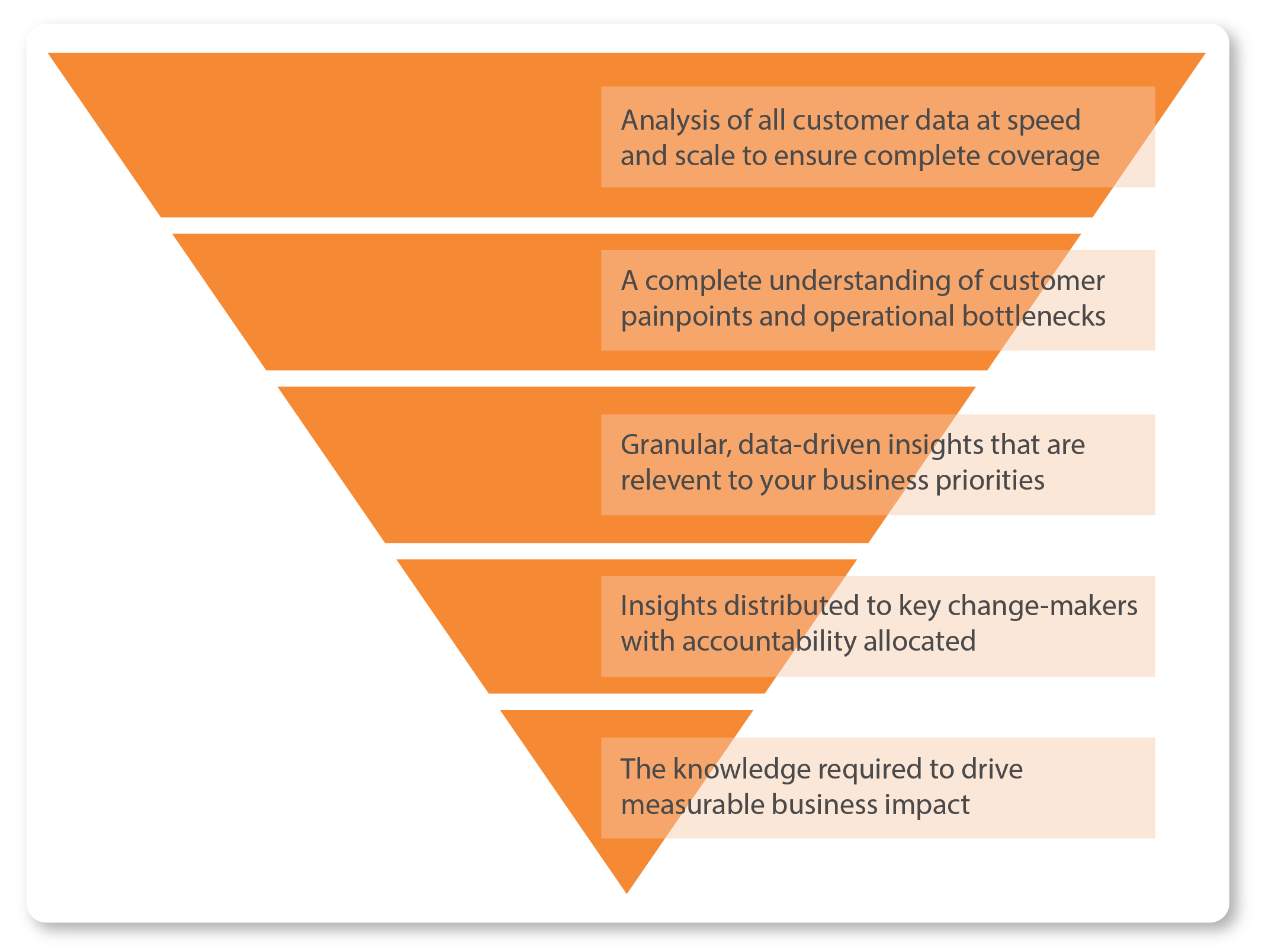
Leveraging AI text analytics from VoC or feedback data and taking a holistic approach to analysing customer interactions along each stage of the life cycle will help your business preempt what could be considered minor issues, becoming churn related pain points later on. Identifying and diagnosing issues before they evolve into pain points will help avoid churn and mistrust. The reporting framework is designed to provide insights and improvements relevant to specific stakeholders at each level and stage of the life cycle. Therefore stakeholders are accountable for issues impacting their immediate business KPIs and priorities.
Recommendations
- Customer feedback analysis frameworks that understand and complement the complexity of your customer journey is critical for insight reporting. Ensure that your framework is designed to support the unique aspects of your industry.
- A reporting framework that is designed to target each stakeholder’s business priorities is key to driving improvements and allocating accountability.
How category relationships between customer pain points are unveiled in unstructured text comments
This analysis allows you to rapidly achieve an executive-level understanding of all stages of the customer life cycle. In this example, public feedback provided for Direct Line Insurance details how improvements can be prioritised and implemented for maximum business benefit by using an impact rating score, noting comment frequency and the average score.
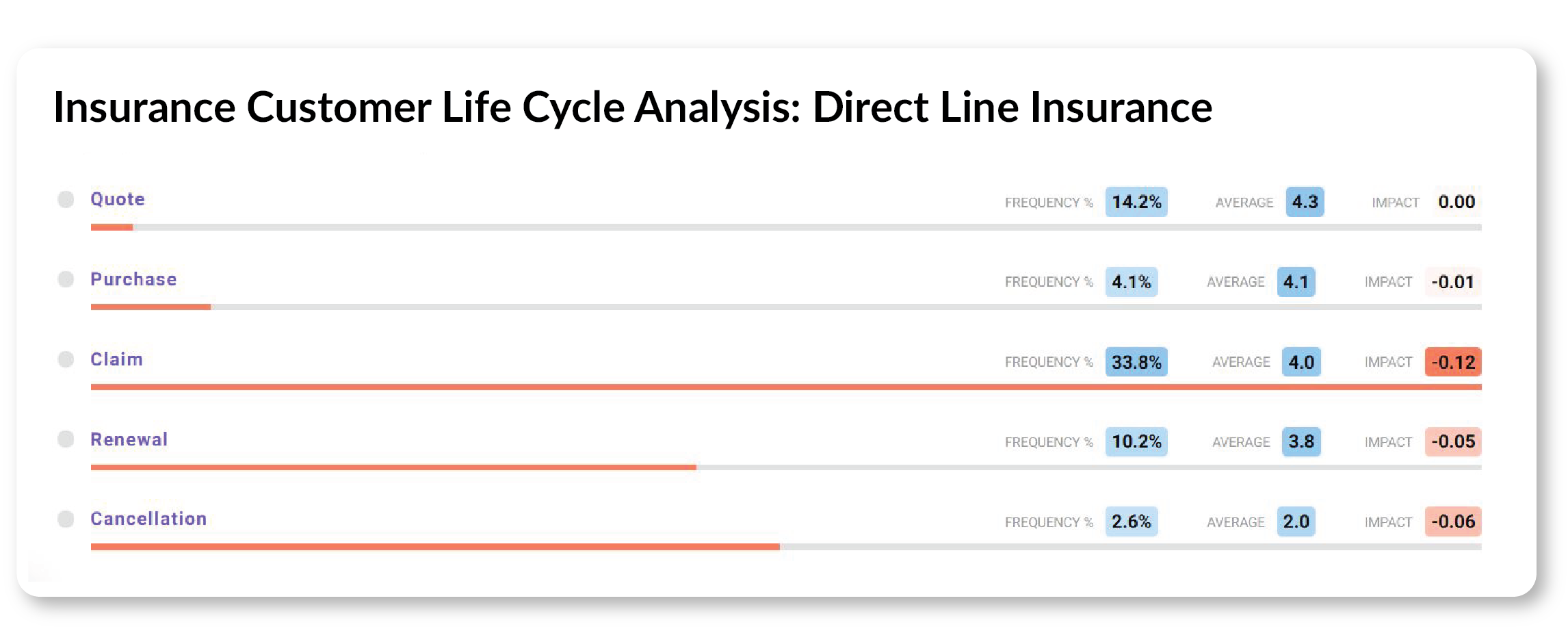
We can also explore the analysis against a time-series graph to understand how customer feedback relating to these issues change over time.
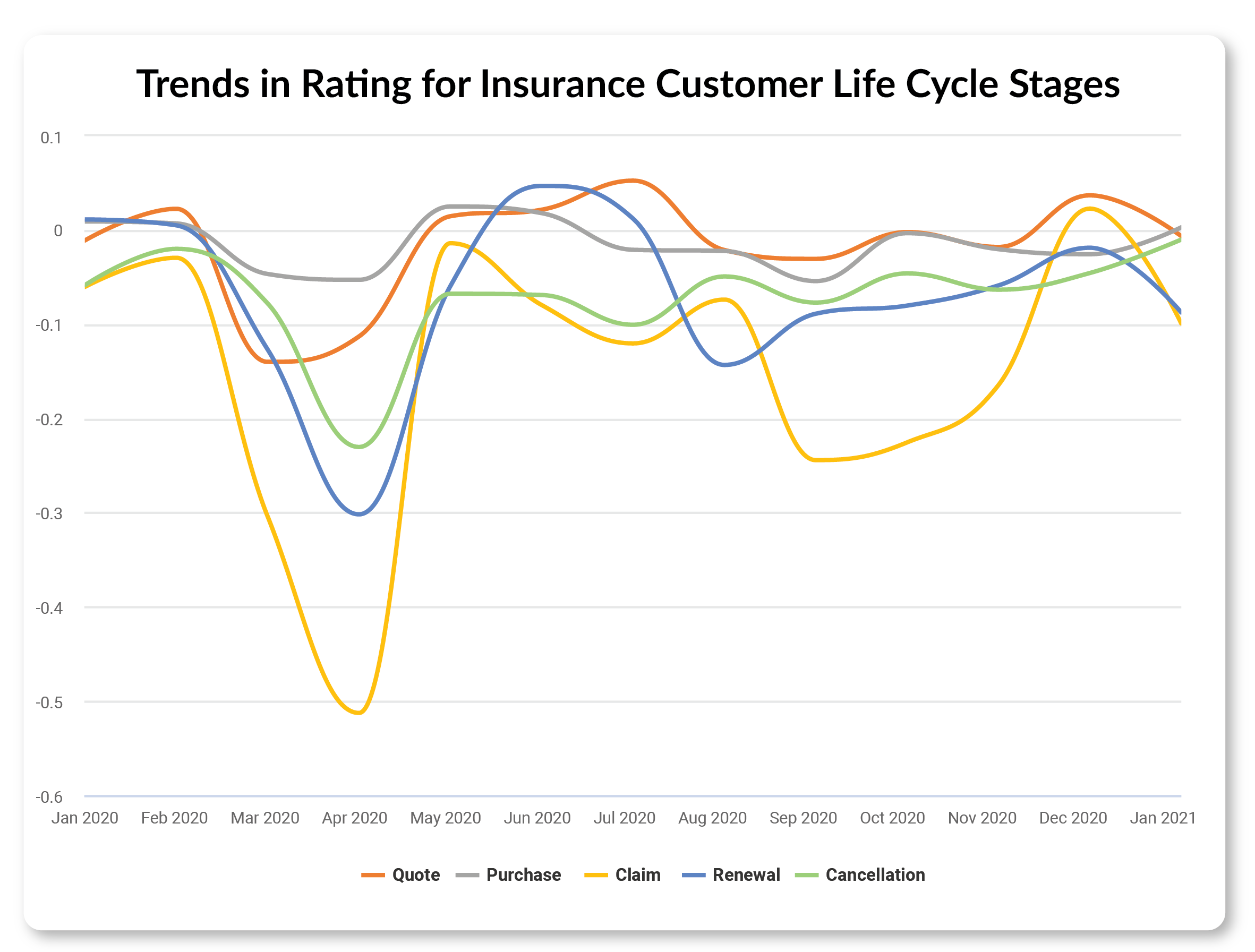
While a dip in a single category of the life cycle (such as “Claims” from September to November 2020) likely has a cause attributed solely to that stage of the life cycle, a multi-aspect dip (such as the overall decline in March and April 2020 in all categories) is often related to inter-connected aspects across multiple stages of the journey. Dissatisfaction during the claims process, for example, may lead to an increase in cancellations: If you are tracking these stages separately, it can be dangerously easy to miss critical relationships, which means that any solutions offered will only cover part of the problem.
We can explore these relationships further by identifying overlaps in the reasons for low scores across multiple areas - For Direct Line, the overall decline in ratings for March and April 2020 is the result of a change in the renewal process, which trickled down to impact the entire customer experience.
In March 2020, a previously unknown issue presents itself: Customers of Direct Line have the need to make a claim and discover much to their surprise that their policy doesn’t provide the cover they need. The majority of customers experiencing this issue mention that they have been “Loyal customers for years” - so we can understand that the issue is rooted in renewals, rather than new policy-holders.
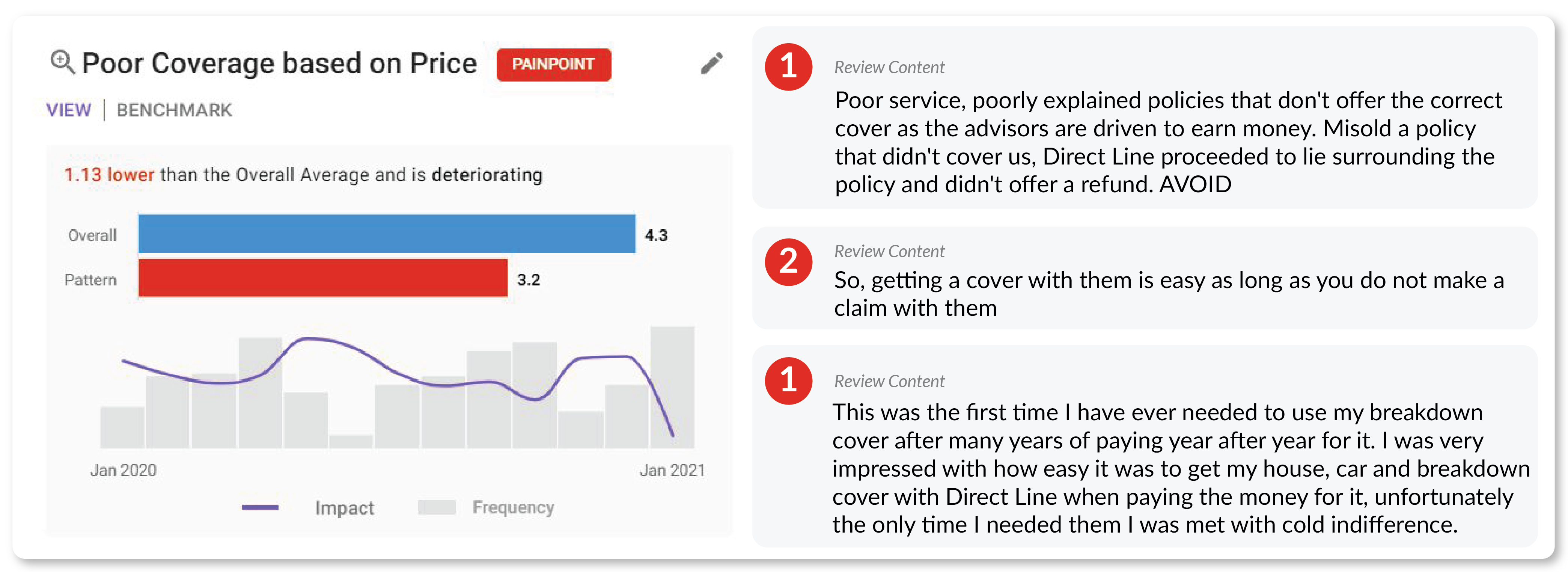
This issue impacts Claims and Cancellations, however, the root cause of the issue lies in a lack of clarity during the renewal process. Without a clear understanding of all stages of the customer journey and analysis across multiple categories, this issue would be nearly impossible to diagnose. Using the Customer Life Cycle Framework, arriving at this conclusion and delivering the necessary details to key stakeholders becomes a matter of course.
Recommendations
- The root cause of an issue doesn’t always align with its endpoint. Delve down into customer feedback to identify the detail behind the pain point so that you can provide solutions that will have a quantifiable impact.
In our next instalment in this series, we’ll take a deep dive into a single segment of the customer life cycle - claims - and understand how the framework can help your business uncover complex bottlenecks in your claims servicing operation and lead to improvements such as reduced call times while improving customer satisfaction. If you would like to learn more about leveraging AI customer analytics for your VoC feedback data, get in touch today to chat with our team of experts.





